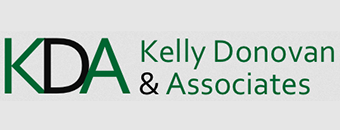Please don’t upload your executive resume on LinkedIn
Your new executive resume is done, and it’s a masterpiece. I can understand wanting to unleash the power of this resume, but please do yourself a favor and don’t upload it to your LinkedIn profile.
To be clear: what I’m talking about has nothing to do with your LinkedIn profile writing (job descriptions, About section, etc.). You should absolutely have your profile complete and filled with compelling information.
What I advise against is uploading a PDF of your resume. After all, if the profile has good content, why would you need the resume on there?
Here are the biggest problems with uploading your resume.
Sensitive information
Your resume might contain information that was never intended to be publicized in such a public venue.
For example, if a confidential number was $12.3M, on the resume we might say “in excess of $10M” or “8-figure” to convey scope without giving away too much. On LinkedIn, that much might be revealing too much, so it might be better to say “multi-million-dollar” or not even quantify it. If you upload your resume, the cat is out of the bag!
If your LinkedIn content has been carefully “sanitized” to omit information from the resume that might be too sensitive for LinkedIn, why would you then upload the resume and negate those efforts to sanitize it?
Once I’ve written an executive resume, my next step is to write the content for the LinkedIn profile (I’m also a LinkedIn profile writer and do this for 99% of my clients). Usually this involves job descriptions that are more condensed and sanitized than the resume content.
Not knowing how it will be used
If you’re on a boat and pour a drop of your drink into the ocean, can you get it back? Of course not!
Putting a document on the Internet can best be compared to that drop of liquid going into the ocean. Good luck stopping it from going wherever the current takes it.
First of all, understand that documents on your profile can be viewed by anyone who can view your profile, which might as well be everyone on the planet. Now, consider the following:
- What if an unscrupulous recruiter submits it for a job without even contacting you? That could stymie your job search; if you subsequently apply for a job at that company, the company might choose not to even interview you because they know you were first presented by a recruiter and therefore would need to pay the commission. (And you’d never even know this happened–the employer isn’t going to send you a rejection letter with this as the reason.)
- What if someone else in your industry plagiarizes your resume content? This could lead to an employer thinking YOU were the plagiarist!
- What if an an executive you know or someone who heard about you was considering you for an opportunity and then rules you out after seeing the resume? You have no opportunity to tailor it for the opportunity in question when you don’t even know you’re being considered.
How it looks
Think for a minute what conclusions people might draw when they see that your resume is on there.
- If you’re employed and don’t want your boss and co-workers to know you’re job-hunting, don’t you think it will look suspicious?
- Do you want everyone who sees the profile to know you’re in an active job search?
Just wait…
Resist the temptation. Wait until someone asks for the resume. Your LinkedIn profile in all its glory should be compelling enough to pique someone’s interest, and should cast a wide enough net to catch any fish you might want. Once you’ve got them in the net, at some point they’ll ask for your resume. And THEN you can go for it!
P.S.
This advice doesn’t have anything to do with a new LinkedIn feature that allows you to store your resume within your account privately so that you have it handy when applying for jobs through LinkedIn. If nobody can see it except employers you’re applying with, that’s fine.
This article first appeared on www.KellyDonovan.com



